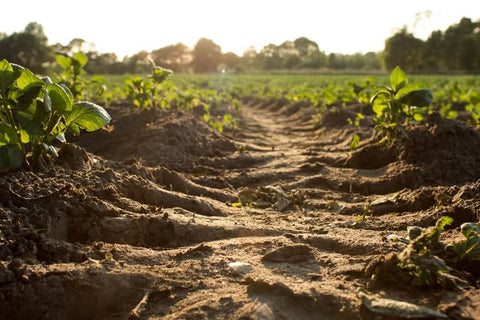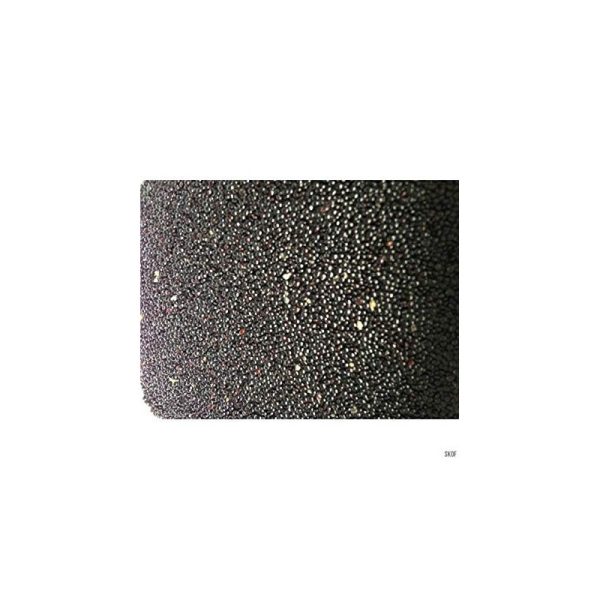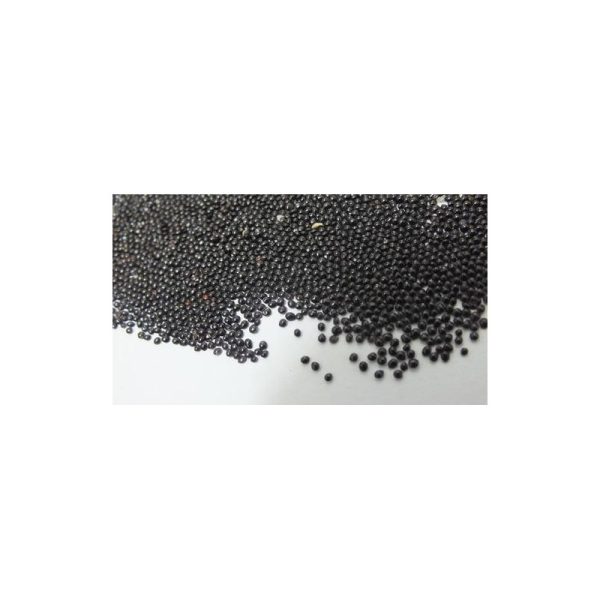You can cook it, preserve it or just have it raw. And the best part, it is one of the easiest vegetables to grow.
Wouldn’t it be amazing if you could grow cabbage at home? Well, after reading this article, you would definitely be able to grow cabbage in the comfort of your home easily. In this article, we have covered everything there is to know on how to grow cabbage at home in India. From the soil conditions to the harvesting techniques, we’ve made it simpler for you to grow your own cabbage patch at home.

Sowing Season – Mid Feb – Mid Apr; Aug – Oct
Soil Type – Sandy to heavy soil rich in organic matter with a pH level of 6.5 to 7.5
Height – 3.3 ft to 6.6 ft
Width – 10” to 14”
Germination Temperature – 15°C – 21°C
Flowering Season – 4 to 5 months after planting.
Sunlight – Full Sun; 6 to 8 hours of direct sunlight daily.
Water – Regular watering intervals; Ensure that the soil is moist yet well-drained.
Companion Plants – Chamomile, Hyssop, Thyme, Rosemary, Dill, Peppermint, Spearmint, Sage, Oregano, Yarrow, Marigolds, Onions, Beetroot, Celery.
Soil Preparation

Cabbage is a relatively easy crop to grow and doesn’t require much pre-planning. Nonetheless, there are a few things you would want to check off your to-do list before you plant the seeds. Cabbage can be grown in different kinds of soils ranging from sandy loam to clay soil. But make sure that the pH level of the soil is maintained at 6.5 to 7 to get a good yield. Soil rich in organic matter with good drainage is all that your cabbage plants need to thrive.
Allowing your plants, adequate room to grow is crucial in case of all crops, not just cabbage. You can ensure that your plants have enough space to grow by referring to the following details –
- Row to Row Distance – 45 cms (Early Maturity) & 60 cms (Late Maturity)
- Plant to Plant Distance – 30 cms (Early Maturity) & 45 cms (Late Maturity)
Growing Cabbage at Home

Let’s go through the process of growing cabbage at home in India.
- Prepare the soil for planting by mixing potting soil and compost in a 2:3 ratio.
- Sprinkle the seeds on the grow bed and cover it very lightly with a thin layer of soil.
- Cabbage requires regular watering. The best option to water your cabbage plants would be to use a watering can or a sprinkler system. Make sure that the soil remains moist, especially when the plants are soaking up sunlight.
- If pests are a problem in your garden, you can also choose to cover your cabbage plants with a mulching sheet or platen cover. This will help in maintaining the moisture levels of the soil which in turn will lead to faster germination.
- Cabbage does not do well in partial or complete shade. If you are initiating the growth process indoors, then make sure that you keep them in the sunlight for about 6 to 8 hours in a day.
- Keep up the watering schedule and relax. The freshly planted seeds will take 7 to 15 days to germinate. Ensure that the temperature of the soil is maintained at 20°C for optimal germination.
- Cabbage requires transplantation in order to grow well. Once 4 to 6 weeks pass after germination, plan for the transplant. Before you transplant your cabbage, make sure that the seedlings have reached a height of 3 to 4 inches with at least 3-4 sets of leaves.
Transplanting cabbage is quite easy. You just have to carefully pull out the seedlings from one grow bed and plant them gently into another.
Still, confused? Just follow these steps to transplant your cabbage plants.

- Hardening Off – Sometimes, gardeners like you, would want to start growing their cabbage plants around the end of the winter season. The best way you can execute this plan is to start your cabbage patch indoors in containers or seed trays. However, to allow your plants a fair chance to grow from seed to maturity, you will need to move them outdoors once the temperature becomes warmer. Hardening off is the process of moving your cabbage plants outdoors to gradually introduce them to the direct sunlight, dry air and cold nights. You can start by exposing them to sunlight for 2-3 hours initially and then gradually increase the duration to the optimal 6 to 8 hours of sunlight in a day. But, keep in mind to not fertilize the cabbage plants during the hardening off process.
- If you are moving the plants from one container to another, then make sure that the container you plan on using for the transplant is large enough to hold at least 4 to 5 gallons of soil. It should also have 2-3 holes at the bottom to allow drainage of excess water.
- Dig a hole with a diameter of 2 inches for each seedling, plant them carefully without harming the young and fragile roots of the plant and cover them lightly with a thin layer of soil. Gently pat the soil around the stem so that the plant stands firmly in the ground.
- Continue with the same watering routine as you did for the seeds. Water the plants regularly so that the soil retains moisture.
- Once your cabbage plants have settled in their new home, they will require around 6 hours of sunlight every day.
- Once the cabbage starts forming its head, feed it liquid, organic fertilizer such as a solution made of water and seaweed.
- 95 to 150 days into the growth process, your cabbage plants will be ready for their first harvest.
Fertilizers for Cabbage
Cabbage comes under the category of ‘heavy feeders’ among the plants. They require a regular dose of fertilizers. It is important to give your cabbage plants a balanced organic fertilizer at least once a week. At AllThatGrows, we believe that plants are very similar to humans in so many ways. The way preservatives and chemicals affect a human body, is the same way chemical fertilizers affect the plants. There are plenty of natural fertilizers that you can find at home. For instance, tea works well to increase the nutrient levels in the soil. Not just that, it also accelerates the growth of the plants.
Pests, Diseases, and Common Problems affecting Cabbage

Splitting – This is one of the major problems that you can face while growing cabbage at home. Splitting basically means that the heads of the cabbage split before reaching the age of maturity. Splitting is more common in quick-growing and early-season varieties. Some reasons why your cabbage would split are overwatering, heavy rains, drought, etc. You can avoid splitting by providing mulch to your plants which will retain moisture in the soil.
Pests – Your cabbage plants are more likely to attract pests when their heads split. The easiest prevention strategy that you can use is to get disease-resistant varieties, especially if you are growing this delicious crop at home. The most common pests that can affect cabbage are aphids, cabbage worms, cabbage loopers, and root maggots. If your plants are affected by pests, the best way to tackle the situation is to cover the cabbage patch with a floating cover.
- If your cabbage patch is being affected by aphids, simply wash them down with a strong stream of water. But, make sure that you do not damage the crop. Once the aphids are gone, trim the affected areas before harvesting.
- For pests like worms and loopers, simply pick them with your hands and throw them out. You can spray the plants with a garlic or neem oil solution to avoid their return to munch on your yummy produce.
Diseases – Cabbage plants also get affected by diseases, just like any other plant. The most common diseases that can damage your plants are clubroot disease, purple blotch, fungal, bacterial, viral diseases, and black speck disease.
- To counter clubroot disease, just increase the pH level of your cabbage plants by adding some lime juice. To avoid purple blotch, you should avoid wetting the foliage.
- Exposure to prolonged cold temperatures can cause black speak disease which can be cured by increasing the potassium levels of the soil.
- The viral, bacterial, and fungal diseases affecting your cabbage patch can be cured by using commercial potting soil.
How to Harvest and Store Cabbage

The heads of cabbage take about 7-8 weeks to reach maturity. As soon as you see clearly defined heads on your cabbage plants, you can harvest them. For instance, cabbage seeds sown in spring would be ready for harvest in November.
To check the maturity of the cabbage, simply squeeze the cabbage heads. If they feel firm, you can go ahead and harvest them.
- Use a sharp knife to harvest the cabbage heads for consumption. This will ensure that the roots do not get damaged.
- Cut 1 to 2 inches above the root level along with 2-3 outer leaves to protect the edible part from damage.
- It’s best to cut as much as you need for immediate consumption. However, if you are harvesting in advance, you can store fresh cabbage for about 2 to 3 days at room temperature. However, if you put it in the fridge, it will remain fresh for 2 weeks.
You might think that growing cabbage at home would be challenging. But, that is definitely not the case. In fact, just like any other leafy green vegetables, cabbage is quite easy to grow. Just make sure that you feed them well.























Reviews
There are no reviews yet.